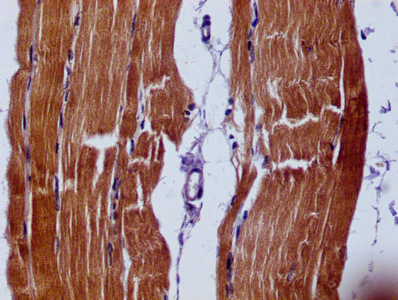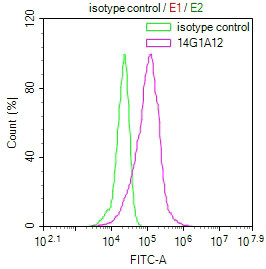Using recombinant human SLN protein (1-31aa) as the immunogen, the mouse is immunized to isolate the B cells. Fusing mouse B cells with myeloma cells to get the hybridomas, screening for the desired hybridoma cell line that produces the SLN antibody, and then culturing the selected hybridomas in the mouse abdominal cavity. The SLN monoclonal antibody is purified from the mouse ascites using protein G affinity chromatography, resulting in a purity of over 95%. This unconjugated IgG2b antibody is suitable for detecting the human SLN protein in ELISA, WB, IF, and FC applications.
Sarcolipin (SLN) is a small peptide that regulates the activity of the sarco/endoplasmic reticulum Ca2+-ATPase (SERCA) pump in skeletal muscle cells. Specifically, sarcolipin inhibits the activity of SERCA, which leads to reduced uptake of calcium ions into the sarcoplasmic reticulum and slower muscle relaxation. It plays an important role in regulating the contractility of skeletal muscle cells and thus overall muscle function. Dysfunction or deficiency of sarcolipin has been associated with muscle disorders such as skeletal muscle weakness and heart failure.







